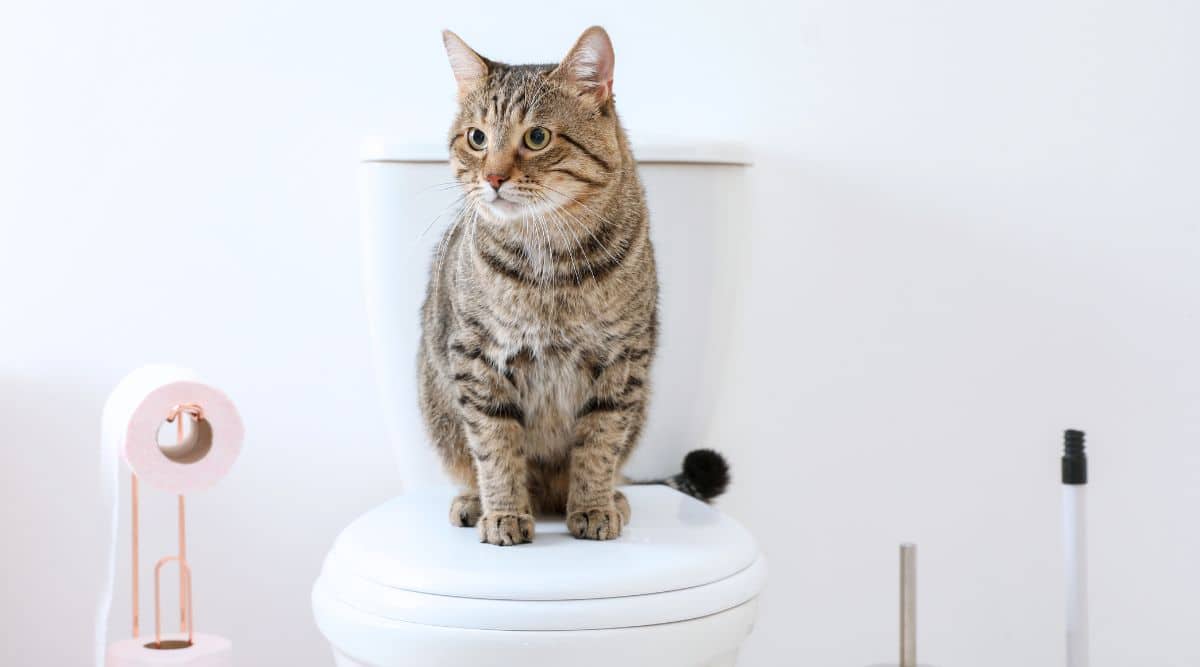Avoid Plumbing Problems: Never Flush Cat Poop Down Your Toilet - Professional Advice
Avoid Plumbing Problems: Never Flush Cat Poop Down Your Toilet - Professional Advice
Blog Article
We have stumbled on this post about Don’t flush cat feces down the toilet listed below on the internet and figured it made good sense to share it with you on this site.

Introduction
As pet cat owners, it's important to be mindful of how we dispose of our feline close friends' waste. While it might seem hassle-free to purge cat poop down the commode, this technique can have damaging consequences for both the setting and human wellness.
Environmental Impact
Flushing cat poop presents harmful microorganisms and bloodsuckers into the water supply, posturing a considerable risk to water ecosystems. These impurities can adversely impact aquatic life and concession water top quality.
Wellness Risks
Along with environmental concerns, purging cat waste can likewise pose health threats to humans. Cat feces may contain Toxoplasma gondii, a bloodsucker that can cause toxoplasmosis-- a potentially extreme illness, especially for expectant ladies and people with damaged immune systems.
Alternatives to Flushing
Fortunately, there are much safer and more accountable methods to throw away pet cat poop. Consider the following options:
1. Scoop and Dispose in Trash
The most typical approach of dealing with pet cat poop is to scoop it into a naturally degradable bag and throw it in the garbage. Make certain to use a devoted clutter scoop and throw away the waste without delay.
2. Usage Biodegradable Litter
Choose biodegradable cat litter made from materials such as corn or wheat. These litters are environmentally friendly and can be safely dealt with in the garbage.
3. Bury in the Yard
If you have a lawn, take into consideration burying cat waste in an assigned location far from vegetable gardens and water sources. Make sure to dig deep adequate to avoid contamination of groundwater.
4. Install a Pet Waste Disposal System
Buy a pet waste disposal system particularly made for pet cat waste. These systems make use of enzymes to break down the waste, lowering odor and ecological effect.
Conclusion
Responsible family pet ownership expands beyond providing food and sanctuary-- it likewise involves appropriate waste monitoring. By avoiding flushing feline poop down the commode and opting for alternate disposal approaches, we can minimize our environmental footprint and safeguard human health and wellness.
Why Can’t I Flush Cat Poop?
It Spreads a Parasite
Cats are frequently infected with a parasite called toxoplasma gondii. The parasite causes an infection called toxoplasmosis. It is usually harmless to cats. The parasite only uses cat poop as a host for its eggs. Otherwise, the cat’s immune system usually keeps the infection at low enough levels to maintain its own health. But it does not stop the develop of eggs. These eggs are tiny and surprisingly tough. They may survive for a year before they begin to grow. But that’s the problem.
Our wastewater system is not designed to deal with toxoplasmosis eggs. Instead, most eggs will flush from your toilet into sewers and wastewater management plants. After the sewage is treated for many other harmful things in it, it is typically released into local rivers, lakes, or oceans. Here, the toxoplasmosis eggs can find new hosts, including starfish, crabs, otters, and many other wildlife. For many, this is a significant risk to their health. Toxoplasmosis can also end up infecting water sources that are important for agriculture, which means our deer, pigs, and sheep can get infected too.
Is There Risk to Humans?
There can be a risk to human life from flushing cat poop down the toilet. If you do so, the parasites from your cat’s poop can end up in shellfish, game animals, or livestock. If this meat is then served raw or undercooked, the people who eat it can get sick.
In fact, according to the CDC, 40 million people in the United States are infected with toxoplasma gondii. They get it from exposure to infected seafood, or from some kind of cat poop contamination, like drinking from a stream that is contaminated or touching anything that has come into contact with cat poop. That includes just cleaning a cat litter box.
Most people who get infected with these parasites will not develop any symptoms. However, for pregnant women or for those with compromised immune systems, the parasite can cause severe health problems.
How to Handle Cat Poop
The best way to handle cat poop is actually to clean the box more often. The eggs that the parasite sheds will not become active until one to five days after the cat poops. That means that if you clean daily, you’re much less likely to come into direct contact with infectious eggs.
That said, always dispose of cat poop in the garbage and not down the toilet. Wash your hands before and after you clean the litter box, and bring the bag of poop right outside to your garbage bins.
https://trenchlesssolutionsusa.com/why-cant-i-flush-cat-poop/

I ran across that content on How to Dispose of Cat Poop and Litter Without Plastic Bags when surfing around the internet. Do you know about somebody who is truly interested in the subject? Take a moment to promote it. I enjoy reading our article about Can You Flush Cat Poo or Litter Down the Toilet?.
Suggested Site Report this page